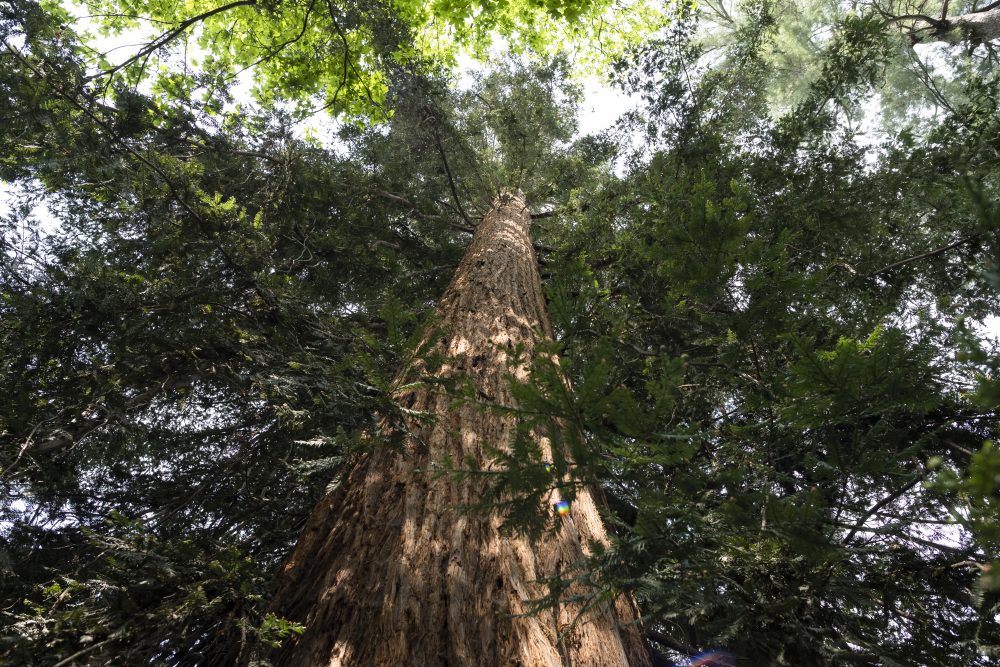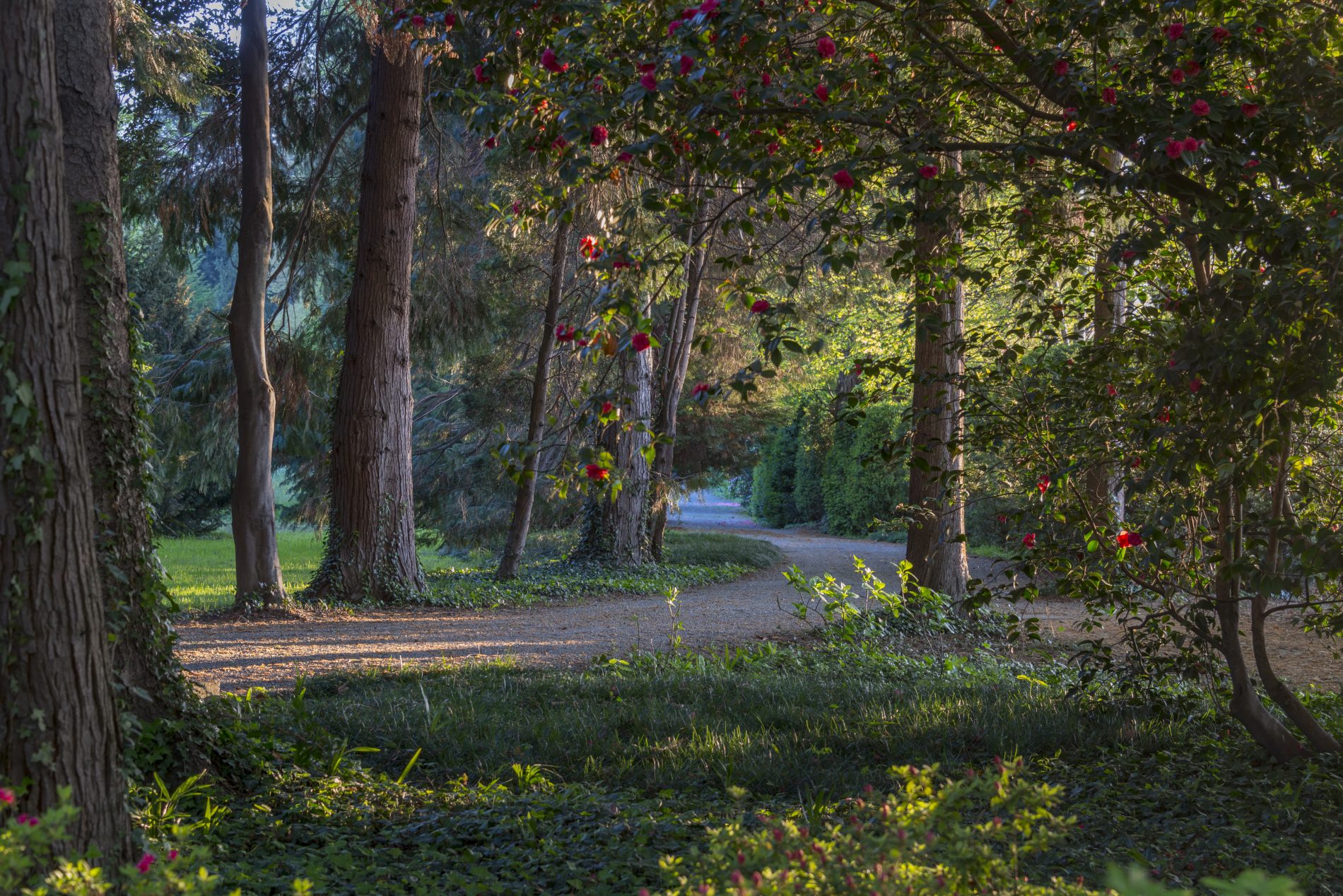The Sequoia
This specimen of Sequoia sempervirens has found an environment here that has allowed it to thrive. It is over 30 meters in height and has a soft, resonant bark and was, until a few years ago, the tallest tree in the Park. A lightning strike during a violent storm damaged its tip, but fortunately, the tree has since recovered and continues to grow healthily.
The sequoia belongs to the Cupressaceae family, like cedars, yews, and other evergreens. It has been present on Earth since prehistoric times and, in its native North America and can exceed 100 meters in height and live up to 2,500 years. Only in the 19th century was the sequoia introduced to Europe for ornamental purposes.
A fun fact, it’s hard to imagine trees for which fire is a crucial resource. Sequoia forests use fire to maintain a balance between young and old trees, clear vegetation around them to create space and light for their growth, eliminate pests and diseases, and stimulate germination. Some plants in areas with frequent fires have developed traits directly influenced by fire, such as breaking seed dormancy. Dormant seeds lie buried in the soil for months or even decades and awaken due to high temperatures after a fire.
American poet Jane Hirshfield dedicated verses to the sequoia, making it a metaphor for life’s resilience:
"It is foolish to let a young sequoia grow next to a house. Even in this one life, you will have to choose. That great, calm being or this clutter of pots and books. Already the first branches brush at the window. Quietly, gently, the great enormity taps at your life."

This specimen of Sequoia sempervirens has found an environment here that has allowed it to thrive. It is over 30 meters in height and has a soft, resonant bark and was, until a few years ago, the tallest tree in the Park. A lightning strike during a violent storm damaged its tip, but fortunately, the tree has since recovered and continues to grow healthily.
The sequoia belongs to the Cupressaceae family, like cedars, yews, and other evergreens. It has been present on Earth since prehistoric times and, in its native North America and can exceed 100 meters in height and live up to 2,500 years. Only in the 19th century was the sequoia introduced to Europe for ornamental purposes.
A fun fact, it’s hard to imagine trees for which fire is a crucial resource. Sequoia forests use fire to maintain a balance between young and old trees, clear vegetation around them to create space and light for their growth, eliminate pests and diseases, and stimulate germination. Some plants in areas with frequent fires have developed traits directly influenced by fire, such as breaking seed dormancy. Dormant seeds lie buried in the soil for months or even decades and awaken due to high temperatures after a fire.
American poet Jane Hirshfield dedicated verses to the sequoia, making it a metaphor for life’s resilience:
“It is foolish to let a young sequoia grow next to a house. Even in this one life, you will have to choose. That great, calm being or this clutter of pots and books. Already the first branches brush at the window. Quietly, gently, the great enormity taps at your life.”
Audio
I punti di interesse
Ti trovi qui
